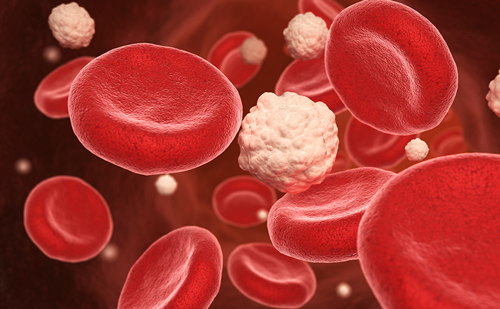Obesity is a global epidemic and represents a substantial health and economic burden.
Obesity is a global epidemic and represents a substantial health and economic burden. In the US, more than one-third (34.9 %) of adults were obese in 2011– 12.1 Obesity has been associated with the development of chronic diseases such as: type 2 diabetes, coronary artery disease, dyslipidemia, stroke, and some cancers.2–4 Childhood obesity is the most important risk factor for insulin resistance as well as increased circulating levels of insulin, leading to decreased insulin sensitivity and increased risk for developing the metabolic syndrome, type 2 diabetes, and cardiovascular disease.5,6 Adiposity, which is not assessed properly by the commonly used body mass index (BMI), is also a predictor of long-term physical disability.7 It is estimated that the health-related costs of obesity have risen to almost 10 % of all medical spending, which, based on 2008 health care costs, amounts to $147 billion per year.8 These data do not account for differences in physical activity levels or fitness. Projections suggest that more than half of the US adult population will be obese by 2030, accruing an additional 6–8.5 million cases of diabetes, 5.7–7.3 million cases of heart disease and stroke, 492,000–669,000 additional cases of cancer, and 26–55 million quality-adjusted life-years lost for the US and UK combined.9 This article aims to examine the causes of the rise in obesity as well as to further the understanding of the energy flux and its contribution to developing practical solutions to help reverse the obesity crisis and improve public health.
Causes of the Obesity Epidemic
The factors underlying the obesity epidemic are complex. For most people, exercise makes up a small part of the energy spent on physical activity. The remainder is spent on routine daily activity including office expenditure, transportation, and household chores. These are collectively termed nonexercise activity thermogenesis (NEAT). Declining levels of NEAT have played a major role in the obesity epidemic10 and involve both environmental effects resulting from sedentary lifestyles (escalators, elevators, lack of sidewalks, unsafe neighbourhoods) and lifestyle factors, which include personal choices (choice of household devices that encourage sedentary behavior). Low levels of NEAT and sedentary behavior have also been correlated to a reduction in activity of skeletal muscle lipoprotein lipase, which controls plasma triglyceride catabolism, high-density lipoprotein (HDL) cholesterol, and other metabolic risk factors.11 Furthermore, projections suggest that this trend of declining NEAT will increase (see Figure 1).12 It has been claimed that the obesity epidemic has been caused by overeating: examination of the National Health and Nutrition Examination Survey (NHANES) data suggests that the average daily energy intake increased from 1971–2000 by 168 kcal/day for men and 335 kcal/day for women.13,14 However, self-reported measures of dietary intake are known to be unreliable.15 The validity of these data have been called into question most recently by a study that found substantial disparity in reported and actual caloric intakes, representing under-reporting of up to 850 calories/day.16 The authors stated that: ‘at no point in the 39-year history of the NHANES did at least 50 % of the respondents provide physiologically credible data.’ The study concluded that self-reported energy intake is inherently flawed and the publication of such data is misleading. The broad use of these data as a means to estimate energy intake likely hinders progress in designing effective weight management interventions.
In the past, it has been recommended that weight-loss interventions focus on reduction of energy intake, although the importance of increased physical activity has been acknowledged.17 In a survey of 421 obese adults in the US, only 55 % had undertaken increased exercise as a strategy for weight loss.18 However, a prospective cohort study of 120,877 US men and women found that the average person gains 3.35 lb every 4 years, and that the greatest weight gain was seen in individuals in the lowest quintile of physical activity.19
Industrialization has had a profound impact on physical activity undertaken in everyday life. There has been a shift from manual work (including agricultural and goods production) to service jobs. In the US, daily occupation-related energy expenditure decreased by more than 100 calories between 1960 and 2010.20 Furthermore, between 1965 and 2010, there was a substantial and significant decrease in the time allocated by women to household management. By 2010, women allocated 25 % more time to screen-based media use than household management (i.e., cooking, cleaning, and laundry combined).21 A longitudinal study of Chinese adults identified an inverse relationship between occupational and domestic physical activity patterns and body weight.22 A recent Canadian study found that the ownership of household devices (e.g. television, car, computer) increased the likelihood of obesity and diabetes, and this was mediated in part by effects on physical activity, sitting time, and dietary energy intake.23
In addition to the increase in sedentary behavior exacerbated by ‘energysaving’ devices, urbanization, and the use of mechanized transportation have led to a decrease in physical activity. As a result of suburbanization and larger school districts, children tend to live further from schools than in previous decades. In 1969, about 15 % of school children ages 6–12 arrived at school in a private vehicle; in 2001, half of all school children were driven to school.24 A review of long-term trends in physical activity in the US found substantial increases over the last 50 years in the number of vehicle miles travelled per person, as well as an increase in the proportion of the population living in suburbs.25 New protocols for calculating population-level estimated energy requirements and average physical activity ratios are currently being evaluated.26
While it cannot be disputed that the rise in obesity levels has paralleled the decline in physical activity at population levels, clinical studies have been less conclusive. Numerous studies have demonstrated that a high level of physical activity is associated with less weight gain over time, while lower levels of physical activity are associated with higher weight gain over time.27–30 In addition, several studies in children have reported strong inverse associations between physical activity and body composition.31,32 Conversely, a systematic review of prospective studies in children concluded that physical activity alone is a poor predictor of increases in adiposity.33 Furthermore, the interpretation of association studies may have been hindered by reverse causality, i.e., obesity leading to lower physical activity levels, as opposed to physical inactivity leading to obesity.34 There is therefore a need for a paradigm shift in understanding the complex relationship between physical activity and obesity.
The Concepts of Energy Balance and Energy Flux
Based on the law of conservation of energy, energy balance is conceptualized as the state achieved when energy intake is equal to energy expenditure. When individuals are in a state of energy balance over time, body weight (energy stores) is maintained.35,36 This has led to the proposition that weight change is due to an energy gap, or the gap in energy balance, where a relatively higher intake results in weight gain and a relatively higher expenditure results in weight loss. Some studies estimate that, over time, a small energy gap explains the increase in population overweight and obesity. Furthermore, it has been suggested that by reducing positive energy balance by 45–100 kcal/ day, weight gain in 90 % of the adult population could be prevented.37–39 Other studies have indicated that larger reductions may be needed among adolescents and racial/ethnic minority youths.40 More recent evidence shows that the gap in energy balance in young people has increased between 1971 and 2008 and an average reduction of 41 kcal/day in youth’s daily energy gap is required to prevent further increases. An additional reduction of 120 kcal/ day and 23 kcal/day would be needed to reach Healthy People 2010 and Healthy People 2020 goals, respectively.41 However, comparing estimates is difficult because of differences in the demographics of the study participants and the measurement errors associated with determining energy intake, expenditure, and storage. Additionally, the definition of ‘energy gap’ varies across studies.
Using estimates of food intake increases and physical activity decreases from 1971 to 2000, it has been calculated that US adults would have experienced a 30- to 80-fold increase in weight gain during that period, if it were not for the physical principles that form the theoretical basis for energy balance.36 For example, an increase in daily energy intake above the equivalent energy expenditure will result over time in energy storage and weight gain. The weight gain will result in an increased resting metabolic rate (RMR) and increased energy cost of moving the greater mass. The increased rate of expenditure will eventually reach an equivalent level of the higher energy intake (thus reaching energy balance), but at an overall increase in intake and expenditure.42 The overall rate of energy movement is termed ‘energy flux’. And while energy balance is the relationship between energy intake and expenditure, it is important to note that energy flux is determined by the rate of energy intake, expenditure, and storage.
It is hypothesized that energy balance may be easier to achieve at high energy flux. In this state, energy intake is more closely linked to energy expenditure, thus providing a physiologic advantage for maintaining a healthy body weight.43 In the 1950s, a population study found that energy intake increased with rising energy expenditure only above a certain level of energy flux. Thus, an energy expenditure threshold for optimal weight regulation was hypothesized. Below this threshold, in what was termed the ‘unregulated zone’, food intake increased as energy expenditure decreased (see Figure 2).36,44
The significance of the model of energy regulation is twofold: First, the model suggests that energy balance, and maintaining a stable weight is more easily achieved at a high energy flux. Second, a high energy flux can be achieved by matching a high energy intake with equivalent high energy expenditure, or by increasing energy stores (gaining weight). Of note is that these two characteristics of the model suggest that the biological system was designed to maintain a high energy flux, and increasing energy stores is a quite viable mechanism to achieve this level of energetics. An extensive body of research indicates that multiple and redundant mechanisms regulate the ‘drive’ for energy intake.45 The high energy flux is attained by matching the intake with expenditure and/or a change in energy storage. Weight gain is consistent with high energy flux combined with low energy expenditure, and it follows that attempting to achieve energy balance at a low energy flux (sedentary behavior combined with food restriction) is not a long-term strategy for weight maintenance.
If energy balance is more readily obtained at high energy flux, individuals who successfully maintain energy balance and achieve weight stability would be expected over time to be in a higher state of energy flux, to maintain higher energy expenditure, to have higher energy expenditure at rest (RMR) and to have minimal body composition change. A study of 10 older adults (mean age 66 years) found that individuals with higher energy flux had a higher RMR.46 In addition, a study of 31 postmenopausal women aged 49–72 years found a positive correlation between high exercise energy expenditure and resting energy expenditure.47 An analysis of 430 healthy young adult men and women showed that over a 10-day period ofobservation, when corrected for body weight, the lean participants displayed the highest daily energy intake, expenditure, RMR, and physical activity energy expenditure (approximately 500 kcal).48 In an observational study that followed 381 healthy adult women and men aged 21–35 years with BMI 20– 35 kg/ m2,49 the participants with a weight change of 1 pound or less over a period of 6 months had the highest rates of caloric intake and expenditure.50
Increasing Energy Expenditure—Impact on Health and Metabolic Diseases
Not only are obesity and physical activity interrelated, but they also form part of a more complex cluster of behavioral and metabolic phenotypes, including diabetes and the metabolic syndrome. Energy flux therefore has an impact not only on weight change but also on general health. Preventing age-associated fitness loss decreases all-cause mortality regardless of weight change.51 Inadequate or decreasing levels of cardiorespiratory fitness have also been associated with increased cancer mortality in men.52 A recent review revealed a lack of long-term (>5 years) data demonstrating the relationship between physical activity and non-communicable diseases, including coronary heart disease, type 2 diabetes, Alzheimer’s disease, and dementia, but concluded that physical activity has a positive influence on all these diseases.53 In addition, a number of studies have also demonstrated that insulin resistance may be improved with regular exercise training even without calorie restriction or weight loss.54–56
An interesting approach to the study of energy flux is to increase energy expenditure through enrolment in an exercise program with a concomitant increase in energy intake, thereby increasing flux without weight change. Numerous studies have demonstrated improvements in metabolic parameters following an increase in energy flux (see Table 1). A small study of previously sedentary middle-aged adults (n=18), found that walk training positively affected insulin sensitivity and markers of fat metabolism.57 In the larger HEalth, RIsk factors, exercise Training And GEnetics (HERITAGE) family study (n=596), healthy, previously sedentary individuals exercised on cycle ergometers 3 days a week for 60 sessions. Although the results were highly variable, improvements were seen in virtually all glycemic parameters. The study concluded that regular exercise can produce sustained improvements in glucose homeostasis without concomitant weight loss.58 Work from a number of groups has shown that this strategy can result in significant reductions in total and abdominal fat in those who are obese and with type 2 diabetes.
Three randomized controlled trials have further explored the impact of energy flux. In the first, 52 obese men were randomly assigned to one of four groups: diet-induced weight loss, exercise-induced weight loss, exercise with calorie compensation to maintain weight, and control and were observed for 3 months. Body weight decreased by 8 % in both weight loss groups; cardiovascular fitness improved by approximately 16 % (p<0.01) in the exercise groups. Although total fat decreased in both weight loss groups, the reduction was 1.3 kg greater in the exerciseinduced weight loss group than in the diet-induced weight loss group (p=0.03). There was also a significant decrease in abdominal and fat in the exercise with calorie compensation group (p=0.001).59 A similar study randomized 44 premenopausal women with abdominal obesity to the same four groups. Reduction in total and abdominal fat within the exercise weight loss group was greater (p<0.001) than within all other groups. The reduction in total and abdominal fat within the diet weight loss and exercise without weight loss groups was greater than within controls (p<0.001) but not different from each other (p>0.05). Insulin sensitivity improved in the exercise weight-loss group (p<0.001).60 In another study of 24 obese, older subjects (aged 50–80 years of age), the exercise weight-loss group showed an increase in insulin-stimulated suppression of glucose Ra, a measure of hepatic insulin sensitivity, almost three times greater than that of the dietinduced weight-loss group. The exercise group with calorie restriction also showed substantial increases in fasting glucose production (see Figure 3).61
These findings suggest that a high energy flux maintained through participating in exercise can improve an individual’s metabolic profile with or without changing body weight. A combination of resistance training and aerobic exercise appears to be most effective in improving glycemic parameters.54,55 It is important to note that even without a change in body weight there is typically a reduction in body fatness as activity levels increase – reinforcing the concept that energy expenditure or storage is a viable means to maintain a high energy flux (see Figure 4).
Energy Flux and Strategies to Combat Obesity
An understanding of energy flux is crucial to the design of interventions to combat obesity. Reducing obesity requires modifying both energy intake and energy expenditure. High expenditure allows for a greater consumption of calories and potentially provides a means to maintain balance and weight at a manageable daily caloric intake. Interventions that do not address both energy expenditure and intake tend to be unsuccessful in the long term.62
In order to design interventions to address the obesity problem, there is a need for changes in public policy, as well as innovative educational programs and technological lifestyle interventions.
There is a pressing need for funding for more well-designed exercise interventions: in 2012 the National Institutes of Health (NIH) National Heart, Lung, and Blood Institute estimate for spending on obesity was $836 million, with spending projected to be $843 million in 2014.63 However, out of 233 categories on its website, the NIH website does not list spending on exercise or physical activity as a category for funding.
Conclusion
The rise in obesity over the past 5 decades has been paralleled by decreased levels of physical activity. More recently, there has been an unprecedented rise in insulin resistance and diabetes-associated risk factors in children and adolescents. Recent studies have demonstrated that an understanding of energy flux can not only enhance weight loss but also improve metabolic parameters. Interventions that increase physical activity promote the reduction of visceral adipose tissue and hepatic insulin resistance, even when calorie intake is increased. In fact, high energy flux, i.e. high caloric intake and expenditure, appears to be an optimal strategy for maintaining weight while improving metabolic strategies, though there is a need for large clinical studies to confirm these findings.
There is a need for more emphasis on both sides of the energy balance equation when trying to determine the causes of the obesity epidemic and the failure of current strategies to prevent weight regain. There is also a need for interventional studies to more conclusively test for metabolic effects of sedentary habits as well as comparing and contrasting the potential benefits of daily non-exercise physical activity and structured exercise. Studies on health outcomes should measure both adiposity/ fat distribution and physical activity/fitness accurately and take both into account in the analyses. In summary, energy flux has the potential to redefine the paradigms of weight-management strategies.














